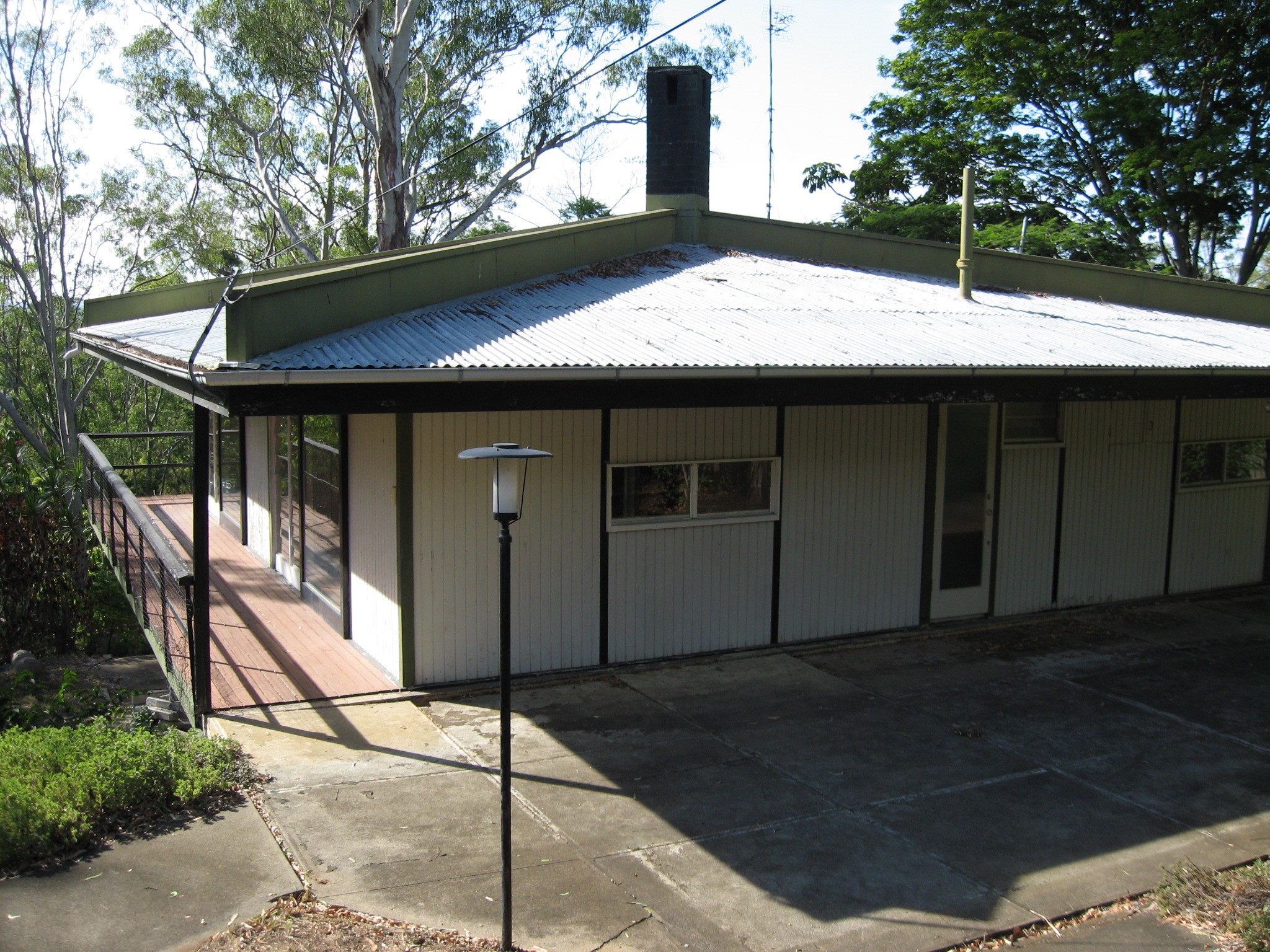Addresses
Type of place
House
Period
Postwar 1945-1960
Style
Brisbane Regional
Addresses
Type of place
House
Period
Postwar 1945-1960
Style
Brisbane Regional
The award-winning former Jacobi House, built in 1958, is an excellent example of an innovative house of the 1950s. Designed by significant and influential Brisbane architects Hayes and Scott, it represents a radical departure from traditional Queensland housing styles and materials using simple stylistic elements and new ‘modern’ materials while responding to the dictates of climate and site.
Also known as
Jacobi House
Lot plan
L46_RP86549
Key dates
Local Heritage Place Since —
Date of Citation —
Construction
Roof: Corrugated iron;Walls: Timber
People/associations
Hayes and Scott (Architect)Criterion for listing
(F) Technical; (H) Historical associationInteractive mapping
Also known as
Jacobi House
Lot plan
L46_RP86549
Key dates
Local Heritage Place Since —
Date of Citation —
Construction
Roof: Corrugated iron;Walls: Timber
People/associations
Hayes and Scott (Architect)Criterion for listing
(F) Technical; (H) Historical associationInteractive mapping
History
In Queensland in the 1950s and 1960s, the restrictions and shortages of wartime austerity slowly gave way to affluence and a sense of optimism. Architects, influenced by modern international styles, benefited from the rapidly developing urban sprawl during the postwar period as immigration and a baby boom contributed to increased demand for housing. Much of the new development consisted of ‘fibro’ and timber bungalows as the traditional verandahed Queenslander fell victim to shortages of building materials and a perception of being ‘old fashioned’. Architects, adopting international and interstate trends, developed a new awareness of the importance of taking account of climate and landscape in the design of new buildings. Queensland architects, like Hayes and Scott, were searching for “an architecture with an identifiable Queensland flavour” and incorporated “traditional devices, such as roof ventilation, screening and verandahs … but did not … imitate the forms of the traditional house.”1
“In 1959, the Queensland Chapter of the Royal Australian Institute of Architects (RAIA) … published Buildings of Queensland, commemorating the centenary of the State. [It contained] a section on progressive houses [by] more recently established firms such as Hayes & Scott, Thynne & Associates, V. Gzell and Dalton & Heathwood. The consensus among the architects interviewed was that the two most progressive firms during the 1950s in Brisbane were Hayes & Scott and Leo Thynne & Associates. [The houses] of Hayes & Scott were described as “elementary simple” and their influence was acknowledged as being important to a lot of Queensland architects.”1
The Jacobi Residence was built following an application by the owner Carol (Jack) Jacobi in February 1958. It is a vanguard example of the new Modern International /Regional Style of architecture that embraced “the more advanced way of building and the cleaner details” developed in the ‘forties to develop a “new, free creative approach to the problems of design.”1 The one central concern for Brisbane architects, such as Heathwood, Dalton, (Hayes and Scott,) training during the ‘fifties and ‘sixties, was “designing for the Queensland climate”.1 Architects of this era wanted to produce “architecture with a distinctly Queensland flavour” and “adapted elements [of the traditional Queensland house] to temper the Queensland climate and used them in a non-derivative way, incorporating them into the prevailing international language of the time.”1
Carol (Jack) Jacobi and his wife Joan installed a swimming pool on the property in 1962 and added at garage and pool house in 1969. They continued to live there until Carol’s death, after which his widow Joan stayed there until 1997. The house is widely recognised by the architectural community being much photographed and included in publications on progressive, innovative design.
Statement of significance
Relevant assessment criteria
This is a place of local heritage significance and meets one or more of the local heritage criteria under the Heritage planning scheme policy of the Brisbane City Plan 2014. It is significant because:
References
-
Avery, P., Dennis P., Whitman P., eds. Cool: The 60s Brisbane House, QUT Brisbane, 2004, p41
-
T. Avery, P. Dennis & P. Whitman eds, The 60s Brisbane House: Cool, QUT School of Design & Built Environment, 2004. Pp.13-14
-
Robin Boyd in P. Dennis “Innovative Architecture for Living: Brisbane architect-designed houses of the 1960s” B.Arch thesis, Queensland University of Technology, 1999, p.19
-
P. Dennis “Innovative Architecture for Living: Brisbane architect-designed houses of the 1960s” B.Arch thesis, Queensland University of Technology, 1999, p.33
-
P. Dennis “Innovative Architecture for Living: Brisbane architect-designed houses of the 1960s” B.Arch thesis, Queensland University of Technology, 1999, pp.59-60
-
P. Dennis “Innovative Architecture for Living: Brisbane architect-designed houses of the 1960s” B.Arch thesis, Queensland University of Technology, 1999
-
F. Gardiner “Significant Twentieth Century Architecture of Queensland” B.Arch thesis, University of Queensland, 1988
-
RP Data website www.realtor.com.au accessed 9 July 2007
-
T. Avery, P. Dennis & P. Whitman eds The 60s Brisbane House: Cool QUT School of Design & Built Environment, 2004
Citation prepared by — Brisbane City Council (page revised June 2022)


